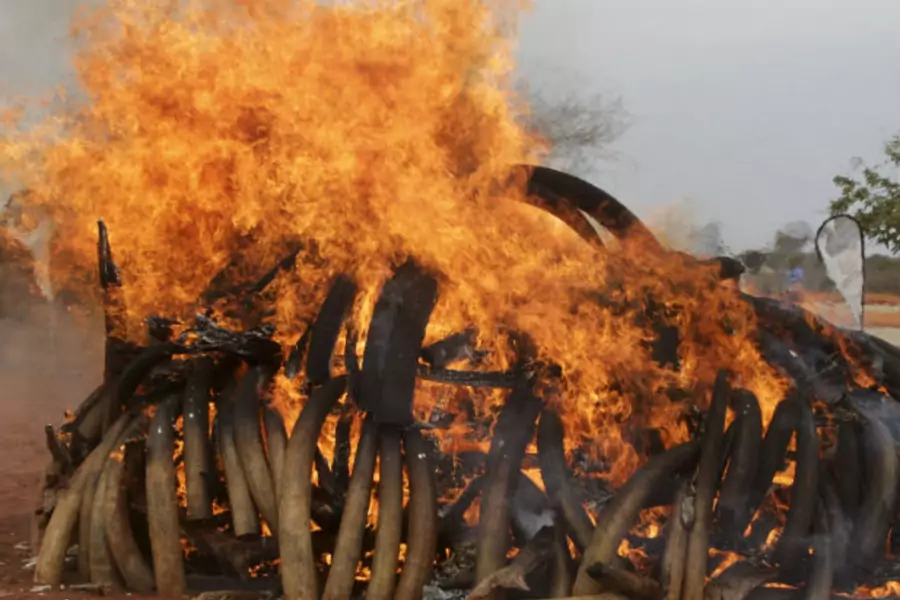More on:
This is a guest post by Emily Mellgard, research associate for the Council on Foreign Relations Africa Studies program.
The illegal trade in “bloody teeth,” the name traffickers have given ivory, reached new heights in 2012. According to TRAFFIC, the wildlife trade monitoring network, more than 32,000 elephants were killed in Africa in 2012 alone to supply the growing demand in ivory. This is a higher number than at any point since the international ivory trade ban was implemented in 1989.
A rising middle class in Asia, where ivory is highly valued and symbolizes wealth, means a growing number of people can afford ivory products. This fuels a race for ever increasing supplies of raw ivory. Since the 1989 ban, the ivory trade on the black market has remained relatively small. But in 2008, the Convention on International Trade in Endangered Species (Cites) made the controversial decision to auction off a 102 ton stockpile of African ivory to “Chinese and Japanese accredited traders.”
Far from flooding the illegal ivory market with cheap ivory and undercutting black market sales, which had been the plan, the appearance of legal ivory provided a smokescreen through which illegal ivory trading flourished. According to the Environmental Investigation Agency, as much as 90 percent of the ivory traded in China today is illegal, inserted into the legal market. This predominant Chinese position in the illegal ivory trade also undermines its African presence.
Of the ivory stockpile auctioned in 2008, China alone bought sixty-eight tons, at U.S. $17 per pound. It quickly certified and sold the ivory piecemeal for an exponential profit of $530 per pound. By March 2013, a pound of raw ivory cost over $1,300. These runaway prices for ivory provide increased incentive for poaching and an expanded black market trade.
Thailand, seen by many as the second largest consumer nation for illegal ivory, recently pledged to “[amend] the national legislation with the goal of putting an end on ivory trade." But the largest consumer of ivory is the Chinese market. They remain reluctant to make reforms. At the Cites conference in Bangkok from March 3 to 14, 2013, a proposal was tabled to increase the signatories of a ban on ivory stockpile sales until 2016. The proposal was seen as “legally flawed,” voted down, and later withdrawn. Some remain hopeful that action will still be taken to stem the eradication of elephants, while others are already preparing for a future without the largest land animals to roam the earth since the mammoth.
More on:
 Online Store
Online Store
